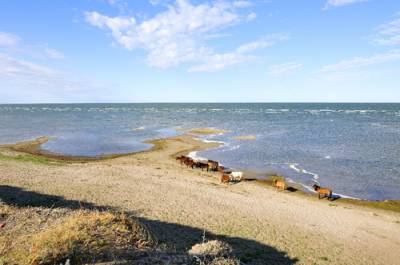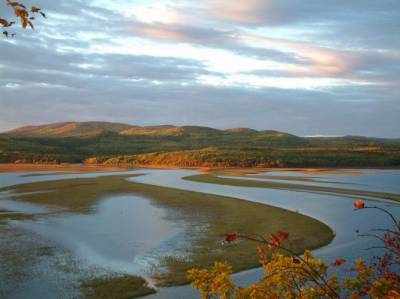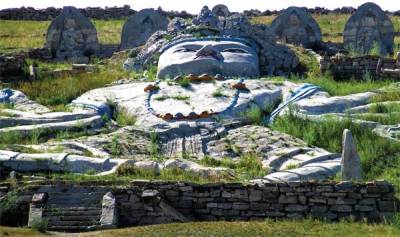9:56 AM Eastern steppe | |
|
It is situated in Eastern Mongolia are a wonder of verdant meadow, perpetual steppe, Golden sand hills, delightful lakes, mineral springs and mountains are flawlessness of nature.This steppe is home to rich untamed life, particularly as the biggest prairie on the planet with extensive variety of species especially a huge number of white Mongolian gazelles and different species. The region was built up to a limited extent to secure the living space of the white gazelle. The Eastern Mongolia Protected Area covers a delegate piece of the remainder of the immense plain biological community. It was secured in 1992 by Parliament Resolution No. 26. Tenderly moving steppe is a normal for the ensured range, which stretches out for more than 200 kilometers along the Chinese outskirt. This territory is situated in Dornod aimag and Sukhbaatar aimag and is the main illustrative of the steppe land area which has not been affected by monetary exercises. It envelops 570,374 hectares of zone around Menen steppe. The Eastern Mongolia Protected territory is a home to 25 types of well evolved creature, overwhelmed by crowds of gazelle (more than 70% of the white gazelle populace of Mongolia possess this region). The secured region is just a little piece of eastern Mongolia's immeasurable steppe. It is additionally acclaimed for its various interesting chronicled destinations check the region, including Chinggis Wall (remains of old Arig town), Huduu Aral; where in 1206 Temuujin predetermined the rule over all Mongolian tribes, was given a title of Chinggis Khaan (Lord relentless as Ocean) by High commission of Mongol Nobles, Traditional people melodies, metal forger and silversmith aptitudes and handcrafts of Dariganga individuals and Buddhist sanctuaries and rock statues of neighborhood respectability dated back to the start of first thousand years are well known all through Mongolia. Burkhan Haldun mountain - This remote mountain, known as God's Hill in the Khentii Mountain is one of the destinations guaranteed as the internment spot of Chinggis Khaan. More than 800 internment locales have been found in the locale, however the primary tomb has yet to be found. Regardless of whether Chinggis Khaan was covered here, The Secret History of the Mongols does portray how the khaan stowed away here as young fellow and later came back to offer recognition to the mountain and express gratefulness to his successors. As a result of its propitious associations, Mongolians climb the mountain, which is beaten by ovoo to pick up quality and good fortunes. Buir lake – This brilliant lake is the biggest in eastern Mongolia. The encompassing environment is for the most part prairie with few trees. The lake has most extreme profundity of 50m and in the event that you are outfitted with fitting offices, it is great spot to fish. Khalkhiin gol waterway – This stream is generally popular spot in view of the fight against Japanese officer in 1939. Various war dedications line the banks of the stream. The remembrances are genuine communist magnum opuses, assembled to respect the Russian and Mongolian Soldiers who passed on in the war. The biggest remembrance is the 50m Khamar Davaa landmark Ikh Burkhant - Another intriguing site in the locale is Ikh Burkhant, where there is an enormous picture of Janraiseg cut to the slope. The cutting was made in 1864 by nearby blue-bloods Togtokhtur and remade somewhere around 1995 and 1997. The cutting is right on the roadside, around 10km south east from Khalkh gol stream. From here the breathtaking however remote Nomgon Strictly Protected Area is around 100km south | |
|
| |
| Total comments: 0 | |




